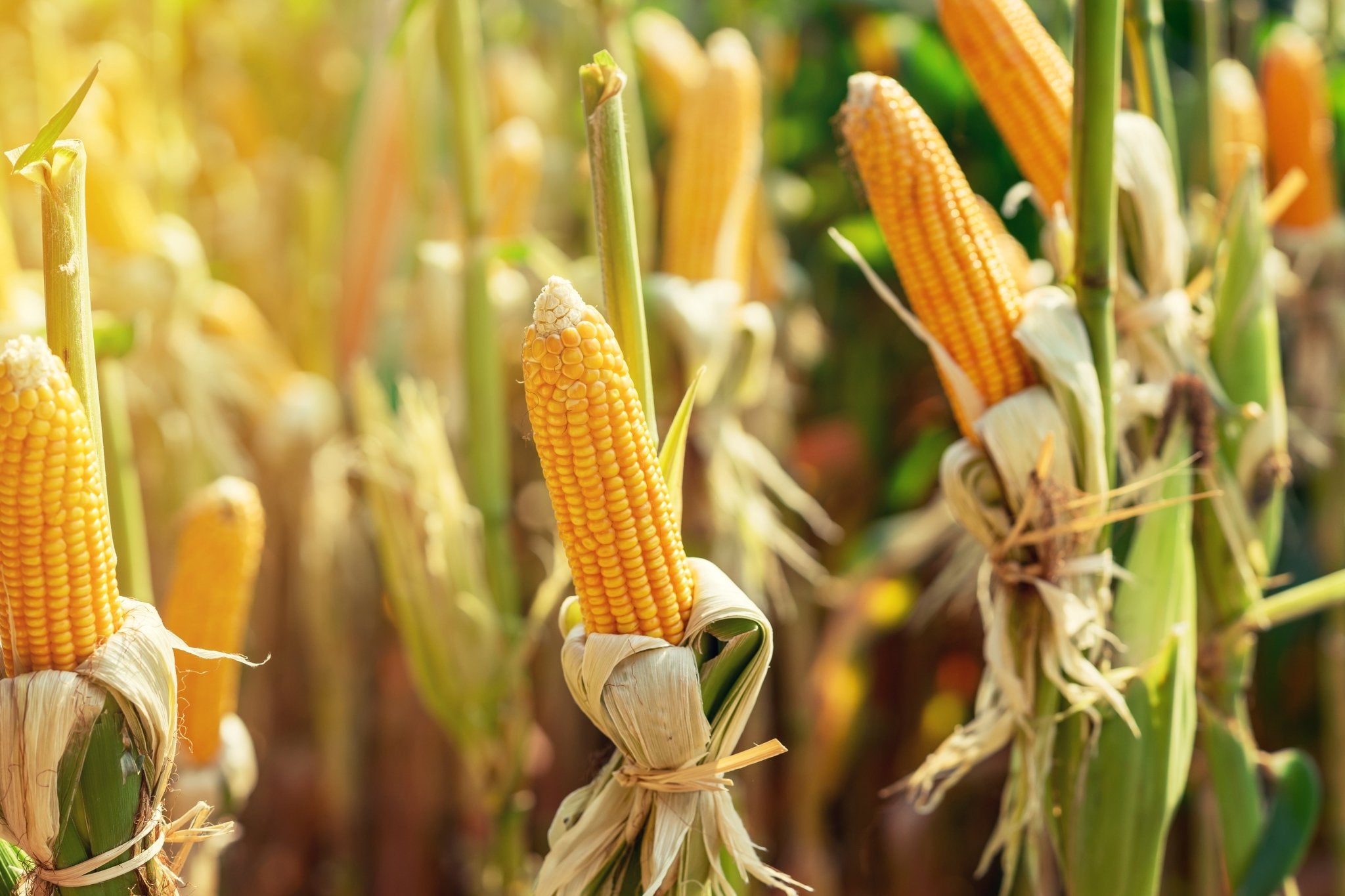
Growing Sweet Corn in Your Organic Garden
Tags:
Sweet corn is one of the most popular vegetables from the store or in the garden. With a little space and planning, you can grow it in your own organic garden for a sweetness and freshness you won’t get from any other source.
Maize has a fascinating history, originating from a 12-kernel seed head of a wild grass in Mesoamerica. After thousands of years of being bred for various characteristics, maize now boasts more diversity than most crops.
For more than one harvest (if you have the room) - plant early, mid-season, and late maturing varieties all at once. Alternatively, you can plant an early maturing variety at two to three week intervals. If you’re a new gardener, I recommend starting with one variety that is suitable for your area.
Plant corn on or after your last average frost date. It is not cold tolerant and will be killed back by frost. Soil temperature should be at least 55º for good germination.
Corn is wind pollinated and needs to be planted close together for the best pollination and fullest ears. Sow in blocks at least three rows wide, 24-30” apart. Plant seed 1-2” deep, and 4” apart, to be thinned to 8”. Refer to your seed packet, as spacing varies for different varieties.
Consider planting in hills staggered 3’ apart. Sow 8 seeds per hill, and thin to 4-6 plants. By planting beans and squash with your corn, as in the Three Sisters, you can maximize space and add nutrients all at once.
Some pests are mammals! Raccoons love corn, and they will demolish a crop in no time. Use heavy-duty tape to secure the ears to the stalks, making it hard for them to get to.
The Wide Variety of Corn
Today sweet corn is yellow, white, bicolor, or multi-colored. There is also flour corn, popcorn, field corn for livestock, and colorful ornamental corn to dry for decoration. Obviously, the first step in growing your own is to choose what type and variety! The focus here is sweet corn. Growing requirements vary slightly for each variety, but I will give you the basics. For details, follow the instructions found on the seed packet. There are several types of sweet corn – open-pollinated (su – also called heirloom, old-fashioned, or standard), sugary enhanced (se), supersweet (sh2), and synergistic (syn - se and sh2 kernels on each ear). The type will be listed in the seed catalog description. Check this page from Johnny’s Selected Seeds for examples.Planting Requirements
As always, a successful crop begins with good soil. Corn needs a sunny area and well-drained soil with a pH of 5.5 to 7. Get a soil test to determine the state of your soil and what amendments it needs. Corn is a heavy nitrogen user. The best way to prepare the soil is to plant an annual legume (clover, vetch, field peas) as a cover crop in the fall, but all is not lost now that it’s spring! Till in 3-4” of compost, and according to your soil test, add an organic high nitrogen fertilizer, such as alfalfa meal, fish meal, or bloodmeal.Maintenance
Give your corn patch at least 1” of water a week with drip irrigation. Put down mulch to conserve moisture and smother weeds. Do not disturb the surface roots of the corn when weeding. Water deeply, especially in dry spells and after the silks appear on the ears. Side dress your plants with nitrogen fertilizer when they are 8” and 24” tall, and when tasseling. Be diligent about watering and weeding for best ear development! Although the wind will pollinate the plants, you can supplement nature’s work by hand pollinating. In the early morning when there is no breeze, gently shake the pollen from the tassels onto the silks of the ears. Test for ripeness about three weeks after the silks have emerged. The ears should feel full and have blunt, not pointed, tips. The silk should be dry. Pull down a bit of husk and pierce a kernel with a fingernail. If the liquid is milky, it is ready. Harvest corn in the early morning while it is still cool and refrigerate immediately. The sugars turn to starch quickly when the ears are warm. This is more common in the open-pollinated varieties. Cultivars and hybrids bred for sweetness will hold their sugar longer. Fresh corn on the cob only takes about 5 minutes to cook for best flavor and tenderness. Put it on the stove last, and serve it right away. Don’t let it sit in the hot water!Pests
The most troublesome pests of corn are cutworms, rootworms, corn earworms, and corn borers. Earworms are the most obvious at harvest time when you find a caterpillar eating the tip of the ear you want for dinner. A simple solution is to put a few drops of vegetable oil in each ear as the silks begin to dry. Mother Earth News has more ideas for controlling corn earworms. Corn borers overwinter in the stalks left in the field, and the eggs of the rootworm overwinter in the soil. Crop rotation, cleaning up debris in the fall, and turning the soil over in spring are the best measures against these pests.Disease
Corn smut is a fungus that distorts the kernels and turns them gray. Smut is a delicacy in Mexico, so cook it up if you have it! If it’s not appetizing, remove the infected plants, and put them in the trash, not the compost pile. Bacterial wilt can be spread by flea beetles. It can go unnoticed until the ears are forming. The best prevention is to keep flea beetles in check. Look for pest and disease resistant varieties. Contact your local extension office for the most suitable corn for your locale. But remember! Proper pH, nutrients, and watering coupled with cultural practices of clean up and crop rotation are your best hedges against pests and disease. Get ready to enjoy that fresh corn on the cob slathered with butter this summer!Would you like to be the first to hear about our new products and more? Sign up for our Nature’s Path Newsletter.








